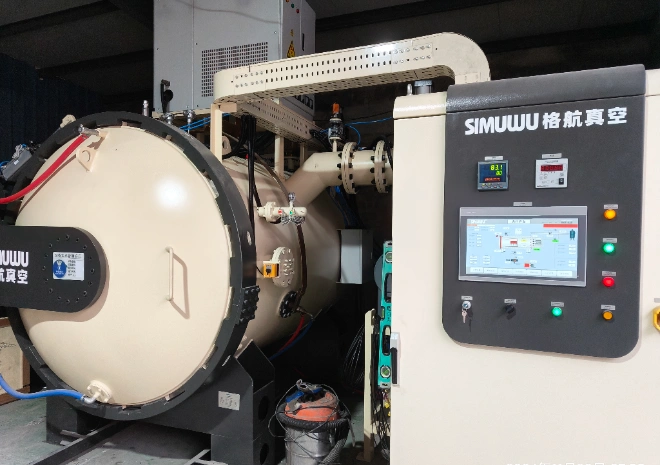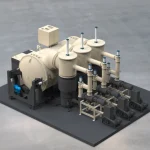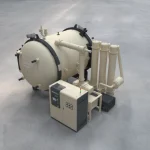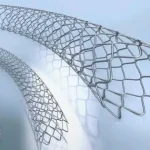What is Vacuum Heat Treatment?
1. Defining Vacuum Heat Treatment
Vacuum heat treatment is a material processing technology that integrates vacuum environments with thermal treatment processes. By heating metals or alloys in a controlled vacuum (ranging from low to ultra-high vacuum, below 1 atm), it eliminates oxidation, decarburization, and carburization risks, resulting in cleaner surfaces and improved material properties.
Unlike conventional methods, vacuum treatment operates without protective atmospheres, relying instead on vacuum-induced inertia to prevent chemical reactions. This enables precise control over heating, cooling, and phase transformations, making it ideal for high-performance components.

2. Core Principles and Mechanisms
Thermal Dynamics in Vacuum
Heat Transfer Efficiency: Reduced gas molecules in vacuum minimize convective resistance, accelerating heat transfer. For example, vacuum furnaces achieve uniform temperatures (±5℃) using PID-controlled systems.
Surface Purification: Vacuum environments volatilize surface contaminants like oil and rust, achieving surface roughness as fine as Ra0.4μm without manual polishing.
Phase Transformation Control
Quenching Techniques: High-pressure gas quenching (e.g., 1–2 MPa nitrogen) cools workpieces rapidly, enabling hardening of thick sections (up to 100mm in high-alloy steels). Oil quenching is preferred for complex shapes to minimize distortion.
Diffusion Processes: Vacuum enables controlled gas injection for nitriding (e.g., 530–560℃ with ammonia) and carbonitriding, producing hardened layers (20–80μm) with high toughness (up to 1700HV for Cr25% alloys).
3. Technical Advantages Over Conventional Methods
| Parameter | Vacuum Heat Treatment | Conventional Methods |
|---|---|---|
| Surface Quality | Oxide-free, Ra0.4μm finish | Oxidized, requires post-treatment |
| Distortion Control | Minimal deformation (e.g., H13 steel) | High risk of cracking |
| Process Flexibility | Supports quenching, tempering, brazing | Limited to air/oil quenching |
| Environmental Impact | Zero emissions | Releases harmful gases |
Case Study: A 5-ton H13 steel die-casting mold treated via vacuum quenching (1.5 MPa nitrogen) exhibited 30% higher fatigue life and zero cracking, compared to salt-bath quenching.
4. Industrial Applications and Case Studies
Aerospace
Turbine Blades: Inconel 718 blades vacuum-solid-solution-treated at 1120℃ achieve 30% greater high-temperature strength.
Automotive
Gear Components: Vacuum-carburized gears reduce wear rates by 40% compared to gas carburizing.
Medical Devices
Surgical Implants: Titanium alloys processed in vacuum exhibit 99.9% purity, meeting biocompatibility standards.
Tooling and Molds
H13 Steel Molds: Vacuum-treated molds last 3× longer than conventionally treated ones, with 50% reduced grinding allowances.
5. Common Challenges and Maintenance
Equipment Issues
Vacuum Leaks: Regularly inspect O-rings and door seals; replace worn components.
Heating Element Failure: Monitor resistance wires for cracks; replace every 2–3 years.
Process Optimization
Cooling Rate Calibration: Use thermal imaging to verify gas flow uniformity.
Software Glitches: Update PLC programs annually and maintain backup logs.
Preventive Maintenance: Implement a 500-hour checklist for pump oil replacement, filter cleaning, and thermal couple calibration.

6.Frequently Asked Questions (FAQ)
Q: What distinguishes vacuum heat treatment from conventional methods?
A: Vacuum treatment eliminates oxidation/decarburization, enables precise phase control, and reduces post-processing .
Q: Which industries rely heavily on vacuum heat treatment?
A: Aerospace , automotive , medical, and tooling .
Q: Why choose vacuum over conventional for high-precision parts?
A: Superior surface finish , minimal distortion, and enhanced fatigue resistance.
Q: How does vacuum nitriding improve material performance?
A: Produces ε-phase nitride layers with high toughness and no brittle “white layer”.
Q: What are the limitations of vacuum heat treatment?
A: Higher equipment costs, slower cooling for thick sections, and sensitivity to power interruptions.
Q: Can vacuum treatment handle large workpieces?
A: Yes, dual-chamber furnaces with 2000kPa gas quenching can process dense loads.
Q: What materials benefit most from vacuum processes?
A: High-alloy steels, titanium alloys, and stainless steels prone to intergranular oxidation.
Q: How does vacuum brazing compare to torch brazing?
A: Vacuum brazing ensures void-free joints without flux residues.
Q: What safety measures are critical for vacuum furnaces?
A: Explosion-proof designs, hydrogen sensors, and automatic pressure relief valves.
Q: Is vacuum heat treatment cost-effective for mass production?
A: Yes, for high-value parts where quality outweighs initial setup costs.
By merging vacuum science with thermal engineering, this technology redefines material performance limits, offering a cleaner, more precise alternative to traditional methods.








